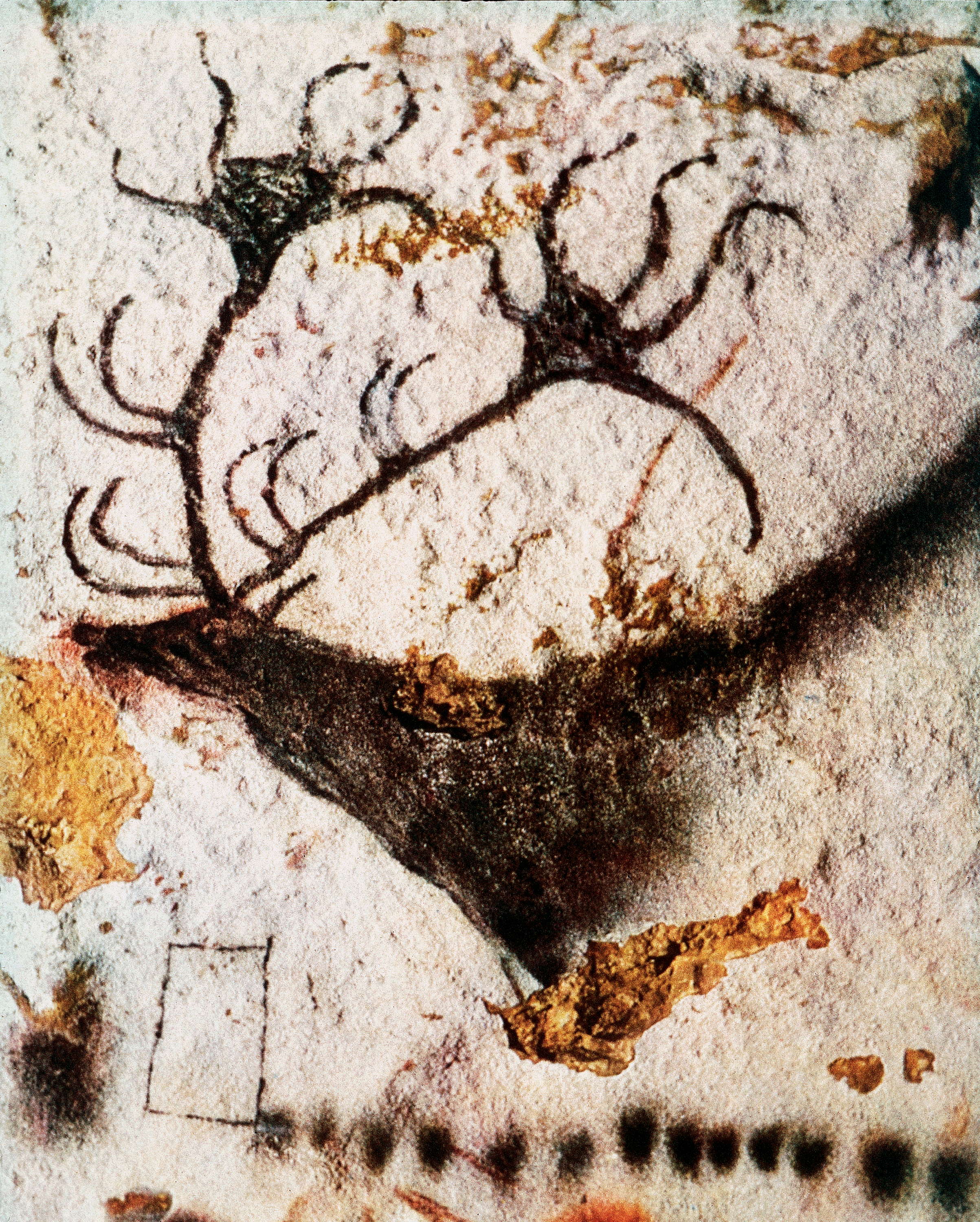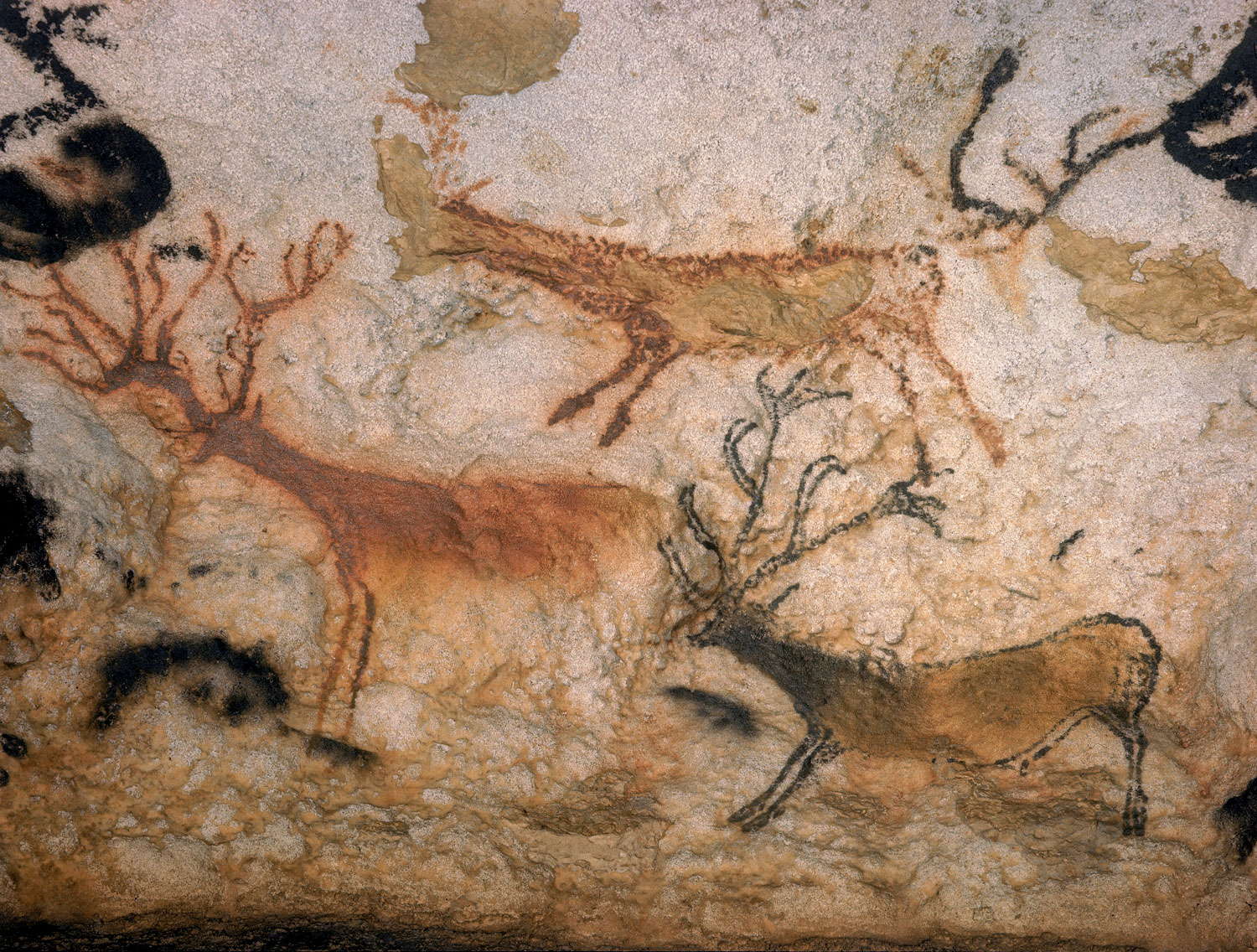Is this Really a Megaloceros?
 |
| Picture from Don's Maps |
The black stag is one of the most well known pieces of parietal art from the Lascaux caves. This iconic painting occupies a prominent position in a section of Lascaux known as the Axial Gallery. Many writers on the iconography of Lascaux refrain from assigning a particular species to this representation, "stag" being a generic term often used to refer to representations of deer in European cave art; however, in every instance I have seen where the black stag is suggested to represented a particular species, that species is invariably the extinct giant deer, Megaloceros giganteus. It's easy to see why this interpretation has so much traction, the antlers of the black stag are certainly large and imposing, and the size of the painting, especially compared to the smaller depictions of deer found in the cave, suggests an animal of great bodily magnificence . However, I think a closer consideration of the particulars of the painting reveals the identification of the animal depicted with megaloceros to be a specious conclusion - I think the painting is more likely to represent the fallow deer, Dama dama, for one important reason - the morphology of the antlers.
Like all fallow deer, the one in the picture has two single-pointed tines on the beam of each antler, but when a fallow deer is viewed from the right angle, as in the picture above, it can seem like only one antler is visible, and that antler can appear to have four tines in two pairs. Of course, the second tine in each pair actually belongs to the antler on the far side of the viewer. Take an antler like the "one" on the deer above, mirror it, and you get a pair of antlers like those of the Black Stag.
Compare the apparent antler morphology of this fallow deer with that of the painting.
The points of the stag in the painting are also a lot more prominent than those of most modern fallow deer I've seen, but many fallow deer fossils from Pleistocene Europe have similarly strong points (see here, here and here) , it could be that such impressive specimens were still to be found in Europe when the Black Stag painting was made. The super long points on the palmations may also be a stylistic choice.
It may be natural to balk at the idea of the lowly fallow deer receiving such a prominent place among the menagerie at Lascaux, but other medium sized animals such as horses are given prominent representations at the site, so it's not all that unusual. There does appear (to me) to be at least one other fallow deer depiction at Lascaux, this one is far more unassuming, mixed in with a number of red deer and in more typical colors for its species. In the form of its antlers, it definitely shows great similarity to the much more dominating Black Stag, though its antler points are more similar to those of a modern fallow deer in prominence:
The probable fallow deer is in the lower right of the picture. Photo by Ralph Morse - "Time & Life Pictures/Getty Images, http://life.time.com/culture/inside-lascaux-rare-unpublished/#6" - via Don's Maps
This post has been in the draft stage for quite some time now. As a student, I don't have that much free time, so this blog will likely be updated fairly sporadically on the whole.
Attribution: Unless otherwise noted, all images on this page are sourced from Wikimedia Commons.
Attribution: Unless otherwise noted, all images on this page are sourced from Wikimedia Commons.





Play at MGM - DRMCD
ReplyDeleteExplore the MGM, our 구리 출장샵 premier 대전광역 출장마사지 dining destination 천안 출장샵 in Las Vegas and 나주 출장안마 experience the best of Las Vegas! From fine-dining restaurants and casual restaurants 경기도 출장마사지 to world-class